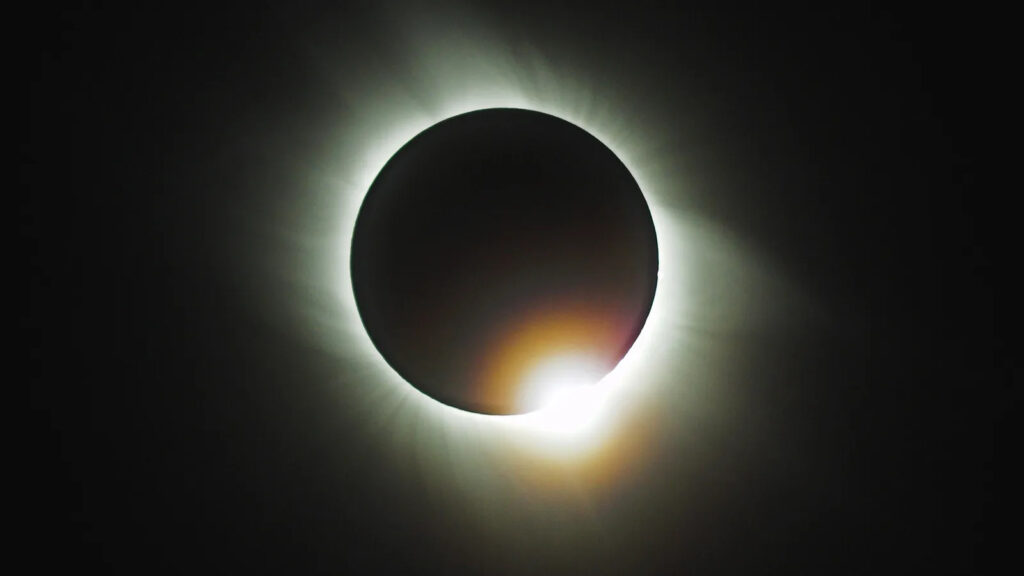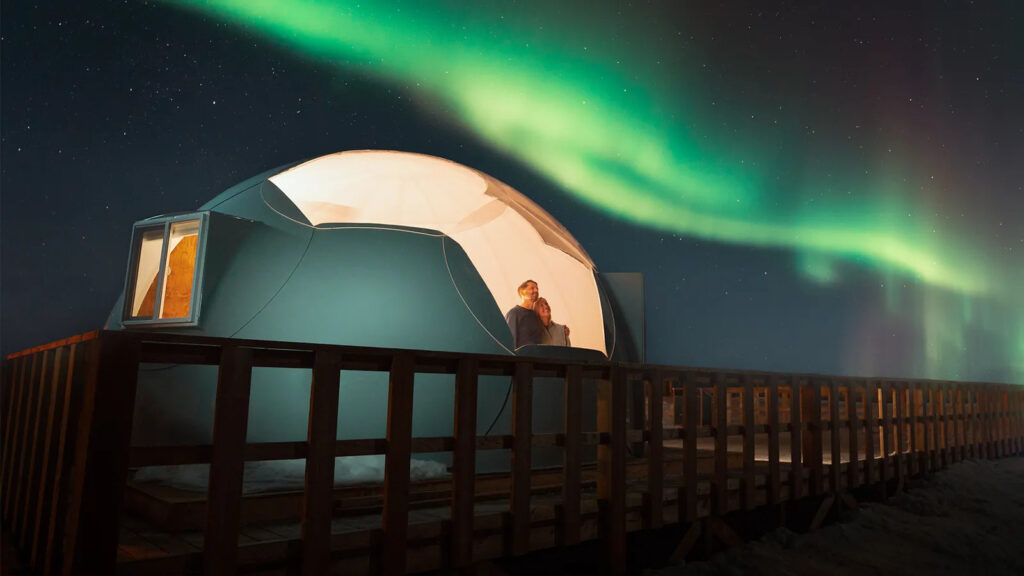On 14 October a solar eclipse will sweep over North, Central and South America. But for Indigenous people across the region, the phenomenon has long held additional significance.
There’s something entrancing about a solar eclipse. Gathered in an Oregon field on 21 August 2017, many in our group had travelled hundreds of miles from all directions to put ourselves in the path of totality. As the Moon began to slide in front of the Sun, the light grew dim and strange. When it reached totality, it was as though the entire world held its breath. Birds stopped singing, conversations went silent and the air around us cooled. Even the breeze seemed to grow still. In that moment, I felt a peaceful sense of wonder.
Then the moment passed; and when the Sun finished its return, everyone broke into applause. Looking around, I saw a few people were overcome by tears. All of us were moved in a way we couldn’t quite describe. The best explanation we could find was that for a brief time we felt linked through all of nature to the Universe.
Because the Moon doesn’t orbit in the exact same plane as the Sun and Earth, solar eclipses aren’t that common (total solar eclipses happen about once every 18 months). In order to see one, the Sun, new Moon and Earth all need to be in a straight line (with the Moon between the Sun and Earth); and you have to be in a spot that lines up with both. During a total eclipse, the new Moon’s shadow completely covers the sun. While during an annular eclipse, like the one that will cross North, Central and South America on 14 October 2023, the new Moon is at its farthest point from Earth so its shadow doesn’t cover the entire sun and a thin annulusor “ring of fire” circles the Moon’s silhouette.

This standard mechanical explanation of an eclipse, which generally comes from the Western scientific perspective, doesn’t capture the emotion of experiencing the phenomena in person. And for some other cultures, in which the phenomena are viewed as sacred and are depicted throughout history in myths and legends, they mean much more. According to Hilding Neilson, an astronomer and a member of the Qalipu Mi’kmaq First Nation, this is one of the limitations of traditional academic science: by focusing on facts and figures, science misses our human connection to the natural world.
Neilson, now a professor at Memorial University in Newfoundland, says he began recognising this overlooked perspective when his own astrophysics education didn’t include any Indigenous astronomy. While it’s essential to learn things like how a star generates energy, he says science should also incorporate knowledge from the people who’ve been in place since time immemorial. So, he began seeking out information.
“Indigenous astronomy comes from centuries of observation,” said Neilson, who now teaches his students how Indigenous astronomy can guide daily activities and offer lessons about Indigenous methodology. “There’s lots of evidence [early Indigenous peoples] were even able to predict recurring events like solar eclipses,” he said.
For many Indigenous societies, however, looking at an eclipse is taboo – which makes sense considering staring at the sun can cause permanent damage to your eyes. Traditionally, some believed viewing an eclipse could cause health and spiritual problems. Others, including the Cherokee people (who believed a supernatural frog was trying to eat the Sun), saw an eclipse as something that should be scared away.
In Alberta, Canada, the Stoney Nakoda people believed solar eclipses were omens of things to come and the eclipse was a time to prepare. In Arizona, the Navajo Nation (Diné) will be closing Monument Valley Navajo Tribal Park to all visitors during the 14 October eclipse. Because, for them, a solar eclipse is a time for renewal, reflection and prayer.

For these reasons, experiencing a solar eclipse with an Indigenous guide is rarely an option. However, taking part in an Indigenous astronomy experience is possible, and can be transformative for visitors, says Sherry Rupert, CEO of Aianta, the American Indian, Alaska Native and Native Hawaiians Tourism Association. She says part of the reason these astronomy experiences can be so meaningful is that many of us have lost our connection to the sky. “I think people forget to take the time to really look up, other than when they hear an airplane go by,” said Rupert.
While a solar eclipse can get people to turn their eyes upward, she says that in order to nurture that sense of interconnection discovered during those thrilling moments of totality, we may need to re-establish our relationship to the Sun, the Moon, the planets and the stars. “It’s amazing when visitors go out with a Native guide and hear stories of how the stars and the Moon affect the plants, the animals, the water and, essentially, our very being,” said Rupert, “It gives them a different perspective on life and can change someone’s journey through the world.”
While some Indigenous sky watching experiences focus on ancient skills and stories, combining Western academic science and Indigenous knowledge is an idea that’s reshaping both science and Indigenous-led tourism. Two-eyed seeing, or etuaptmumk, is a Mi’kmaw concept that encourages people to see the world from the best of both perspectives. Lilyrose Meyers, the Knowledge Holder at Métis Crossing, a cultural interpretive centre in Alberta, says that by blending ancient Métis knowledge and oral history with modern tools and academic information, visitors can relate to the sky in an entirely new way.

During interpretive talks, visitors to Métis Crossing can look up through telescopes set up by the Edmonton Royal Astronomical Society, while hearing traditional stories about how Métis people used the stars for orientation and navigation, telling time and as a calendar. “We’d use the heavens to time hunts and know when to harvest plants and berries,” Meyers said. The stories about the sky also helped keep children safe or taught morality lessons. “Children were told the Northern Lights were dancing ancestors who would pick them up if they strayed too far from camp,” she added.
Neilson, who’s making a career out of Indigenising astronomy with a two-eyed seeing approach, says while the 14 October eclipse won’t travel through his home province of Newfoundland, the total eclipse on 8 April 2024, will. To mark that event, the eclipse viewing festival in Gander will offer visitors a chance to learn about the eclipse through the hard data of Western science and through the stories and ceremonies of the region’s Indigenous peoples.
“This is the only part of the solar system where you can actually see a total solar eclipse,” Neilson said. “And maybe seeing these two giant celestial objects passing in front of one other can remind us to do a better job of relating to and caring for the Earth.”
Source : BBC









